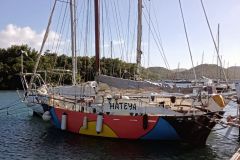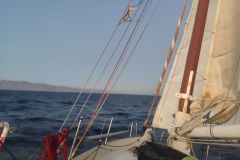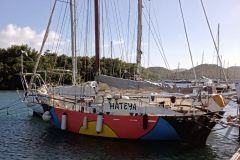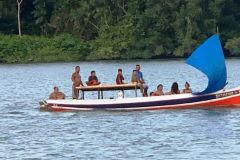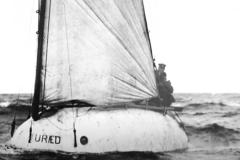In November 2025, Belém, gateway to the Amazon, will host COP 30, a summit that will be decisive for the future of our planet's climate. Leaders from around the world will be flying in, while voices will be raised denouncing the carbon footprint of this major gathering. But for those who want to be consistent with their convictions, one question stands out: is there another way to get to COP 30, using more environmentally-friendly means of transport? And why not consider a voyage under sail, buoyed by the trade winds and the desire to prove that another mode of travel is possible? Crossing the Atlantic for a climate summit: militant act, logistical challenge or utopia?
A possible but demanding journey
Crossing the Atlantic by sail is nothing new. For centuries, navigators and explorers have taken this route, carried by trade winds and ocean currents. Even today, hundreds of yachtsmen cross the Atlantic every year from Europe to the West Indies, before heading back down along the South American coast. But this is no trivial voyage.
It takes around three weeks at sea to reach the Caribbean from Europe, then another ten to fifteen days to sail down to Belém, depending on winds and currents. A journey lasting over a month, requiring good preparation, a suitable sailboat and absolute flexibility on dates. By comparison, a direct flight from Paris to Belém takes less than ten hours.
Is this mode of transport realistic for a summit where every day counts?
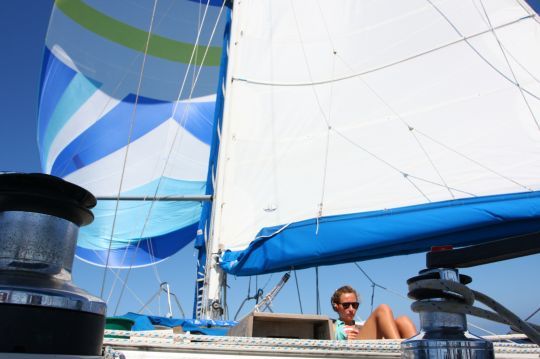
The test of time: a luxury or a return to basics?
In today's fast-paced society, where the slightest delay is perceived as a problem, taking to sea requires a paradigm shift. In sailing, you don't choose your departure time with precision: you adapt to weather windows, accept setbacks and move with the wind.
It also means rethinking the very notion of time. Going to COP 30 by sailboat means devoting several months to it: the outward crossing, the presence on site, and then the return trip. A commitment that few can afford, either professionally or personally. But isn't it also a symbol of a more sustainable way of life, where speed and efficiency give way to patience and adaptation?
This questioning goes far beyond simple travel. It questions the way we inhabit the world: should we slow down to act more effectively?
Between militant act and media demonstration
Sailing to Belém would be more than just a personal feat. It would be a powerful signal, a tangible demonstration that it is possible to act differently. In 2019, Greta Thunberg had already made her mark by crossing the Atlantic in a zero-carbon sailboat to attend the UN climate summit in New York. Her gesture drew both admiration and criticism: some praised the coherence of her commitment, others criticized it as a symbolic action rather than an effective one.
This raises a key question: is a symbol enough? A sailing trip to COP 30 would undoubtedly draw media attention to the impact of air transport and the urgent need to rethink the way we travel. But would it have a concrete effect on the political decisions taken in Belém? Greta Thunberg's example shows that media impact doesn't always translate into immediate change.

An alternative for everyone?
Beyond the symbolism, there is also the question of accessibility. Taking a sailboat across the Atlantic is far from being within everyone's reach. You need nautical skills, equipment and time. Even if you embark on a sailboat already equipped for the voyage, it remains a challenge reserved for a minority.
So how can we ensure that this type of approach doesn't remain a mere privilege? One solution would be to organize collective crossings, sailing expeditions dedicated to COP 30 participants, offering a concrete alternative to air travel. Another approach would be to accelerate the development of innovative maritime technologies, such as sailing freighters or hybrid ferries, to democratize this mode of transport.
Perhaps the question isn't so much, can we go to COP 30 on a sailboat, but rather how can we make sure that tomorrow, it's a matter of course for everyone?
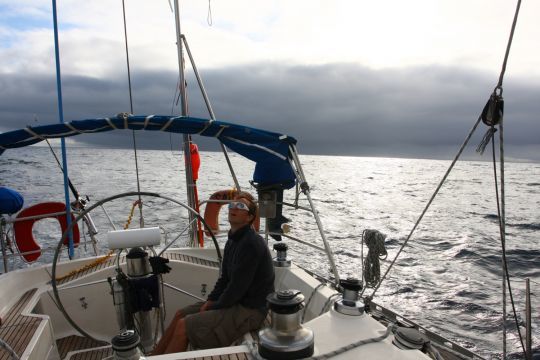
Reinventing travel for a sustainable future
Finally, this reflection goes far beyond a simple trip to Belém. It raises a fundamental question: what if the future of travel lay in a return to slower, more considered forms of mobility?
Aviation remains an essential link in international trade, but its environmental impact is undeniable. More and more alternatives are emerging: high-speed trains, modern sailboats, eco-friendly airships... What if, instead of focusing on a single mode of transport, we completely rethought the way we travel, combining different solutions, accepting to slow down, and making each journey an adventure in itself?

Conclusion: Is the wind of change really blowing at COP 30?
Going to COP 30 by sailboat is more than a means of transport: it's a choice, a manifesto. It's proof that other paths exist, even if they are longer and more demanding. But above all, it's asking an essential question: if we're not prepared to change the way we travel today, will we really be able to transform our societies tomorrow?
"Example is not the best way to convince, it's the only way." âeuros Gandhi.

 /
/ 



